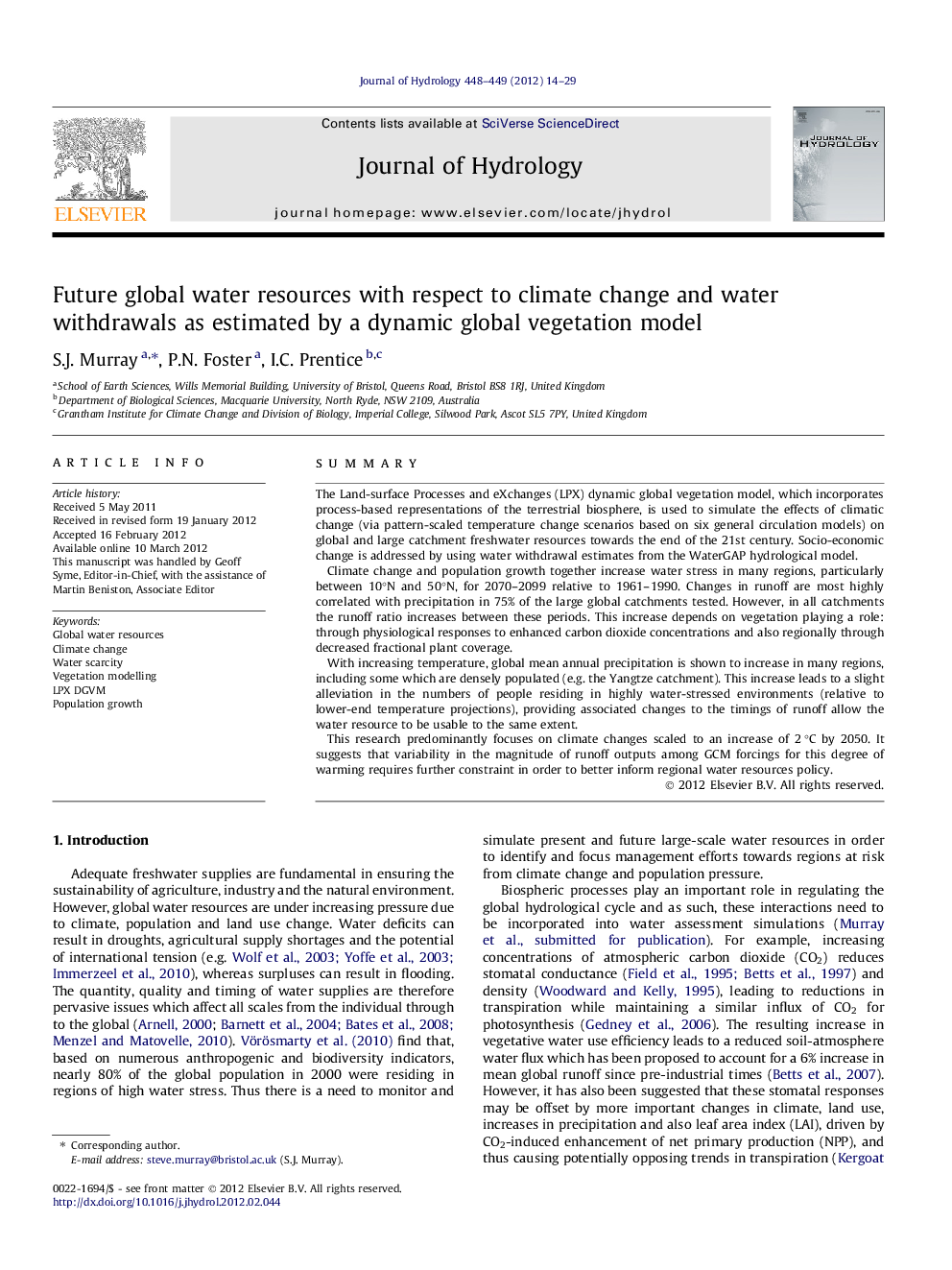| Article ID | Journal | Published Year | Pages | File Type |
|---|---|---|---|---|
| 4576949 | Journal of Hydrology | 2012 | 16 Pages |
SummaryThe Land-surface Processes and eXchanges (LPX) dynamic global vegetation model, which incorporates process-based representations of the terrestrial biosphere, is used to simulate the effects of climatic change (via pattern-scaled temperature change scenarios based on six general circulation models) on global and large catchment freshwater resources towards the end of the 21st century. Socio-economic change is addressed by using water withdrawal estimates from the WaterGAP hydrological model.Climate change and population growth together increase water stress in many regions, particularly between 10°N and 50°N, for 2070–2099 relative to 1961–1990. Changes in runoff are most highly correlated with precipitation in 75% of the large global catchments tested. However, in all catchments the runoff ratio increases between these periods. This increase depends on vegetation playing a role: through physiological responses to enhanced carbon dioxide concentrations and also regionally through decreased fractional plant coverage.With increasing temperature, global mean annual precipitation is shown to increase in many regions, including some which are densely populated (e.g. the Yangtze catchment). This increase leads to a slight alleviation in the numbers of people residing in highly water-stressed environments (relative to lower-end temperature projections), providing associated changes to the timings of runoff allow the water resource to be usable to the same extent.This research predominantly focuses on climate changes scaled to an increase of 2 °C by 2050. It suggests that variability in the magnitude of runoff outputs among GCM forcings for this degree of warming requires further constraint in order to better inform regional water resources policy.
► LPX-DGVM used to identify future water stress under scenarios of climate change. ► WaterGAP used to project water demands under scenarios of socio-economic growth. ► Global water stress increases under all scenarios of climate and population change. ► Precipitation increases may alleviate numbers of people in high water stress regions. ► Further constraint of uncertainty among GCMs required to better inform water policy.
